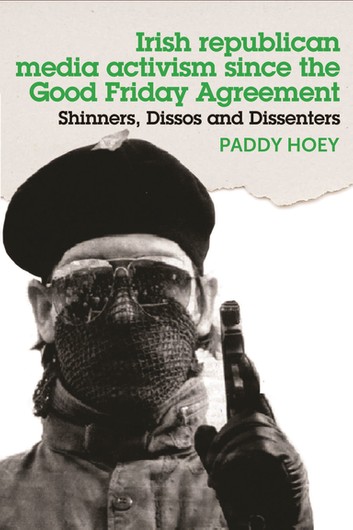2019-03-12
Book review: Irish Republican media activism

How to inform supporters and the public about its political ideology is a regular point of discussion for all political organisations; even more so for radical organisations who cannot rely on the mainstream media for spreading their message. This is particularly true for Irish Republican organisations that developed a critical analysis of the peace process.
While an increasing number of organisations opposed to the current settlement have emerged in the past 20 years, in recent years, none of them was able to provide a lasting platform for political debate. In this situation, although being a new and still relatively small publication, An Spréach occupies a crucial place in the political sphere of Republicanism for providing a regular channel for debate.
The past three decades saw the rise of several Republican papers, on the one hand, published as party organs such as Saoirse, Sovereign Nation, and Starry Plough, on the other hand, as platforms for collective debates such as Fourthwrite, the Blanket, or Forum. The past decades also witnessed the subsequent fall of these publications. Understanding the strength of these publications and the weaknesses that, subsequently, led to their downfall in circulation and quality is a crucial task for the success of An Spréach.
Paddy Hoey has published a timely book on just that. In his monograph, “Shinners, Dissos and Dissenters”, Hoey analyses the media activism of Republicans. While putting on a particular focus on what he calls “AGFAR”, which is the rather idiosyncratic acronym for “Anti Good Friday Agreement Republicanism” (while it comes rather bumpy, it is still a better invention than the otherwise oftentimes used “VDR” for “Violent Dissident Republicanism”), he also includes the publications and internet activism of much “older” groups such as (Provisional) Sinn Féin, the IRSP, and even the Workers’ Party.
Hoey is a Lecturer at the Edge Hill University who has recently started writing on contemporary Republicanism for newspapers such as the New European and scholarly journals. In doing so, Hoey established himself as one of the more interesting and informed academics in the field.
Hoey separates Republican organisations since the 1986-split into four distinct blocs. The first one is Sinn Féin, the second one is RSF and the 32CSM, the third one is Fourthwrite and the Blanket, and the last bloc is éirígí, RNU, and, most recently, Saoradh. While the readers not necessarily need to agree with his distinction and his introductions to the groups – the parts discussing RNU shows him as being least informed of its the formation and development – his strength lies in the analysis of the third bloc.
For Hoey, Fourthwrite and the Blanket provided the intellectual ground for the emergence of the fourth bloc. Hence, his analyses of these two publications are most revealing. Following the cessation of these publications, the “newer” organisation lacked publication strategies and, thus, were unable to reach a similar level of political and theoretical debate.
Most interesting for activists will be what Hoey writes about attempts to provide a counternarrative throughout history since the United Irishmen in periods of media-blackout, censorship and Section 31, rather than his outlines of post-1994 An Phoblacht or the Andersonstown News. Accordingly, the achievements and failures of the three long-running papers Starry Plough, Saoirse, and Sovereign Nation lack thorough analysis; instead, the failed attempt to establish Daily Ireland by the Belfast Media Group in 2005/6 is explained in detail.
Nonetheless, activists will find much to learn in this book. What becomes apparent is that rise and fall of papers heavily relied on single individuals, hence, these publications were hardly reflective of the membership of Republican organisations. For example, Hoey links the discontinuation of the Starry Plough to the departure of Liam O`Ruairc and Gerry Ruddy from the IRSP. In essence, the future success of Republican publications demands a coherent, long-term strategy and collective editing.
The past decade has seen several academic publications analysing contemporary Republicanism with John Morrison’s “The Origins and Rise of Dissident Irish Republicanism” still being the most informed. Hoey’s book is an essential addition to this growing corpus of scholarly literature. Activists determined to re-establish Republicanism within the wider public will find the book useful, insofar that it sheds light on the success and failures of the past. However, as most academic publications, it comes with a heavy price tag. Activist will need to wait until the publication of the much cheaper paperback in 2019.
 Paddy Hoey: Shinners, Dissos and Dissenters. Irish Republican media activism since the Good Friday Agreement, Manchester: Manchester University Press, 2018. Order from Amazon.
Paddy Hoey: Shinners, Dissos and Dissenters. Irish Republican media activism since the Good Friday Agreement, Manchester: Manchester University Press, 2018. Order from Amazon.
This article was initially published in An Spréach, issue 3, Jan.-Mar. 2019.
dieterreinisch - 14:18 @ History, Irish Republicanism | 8659 comments